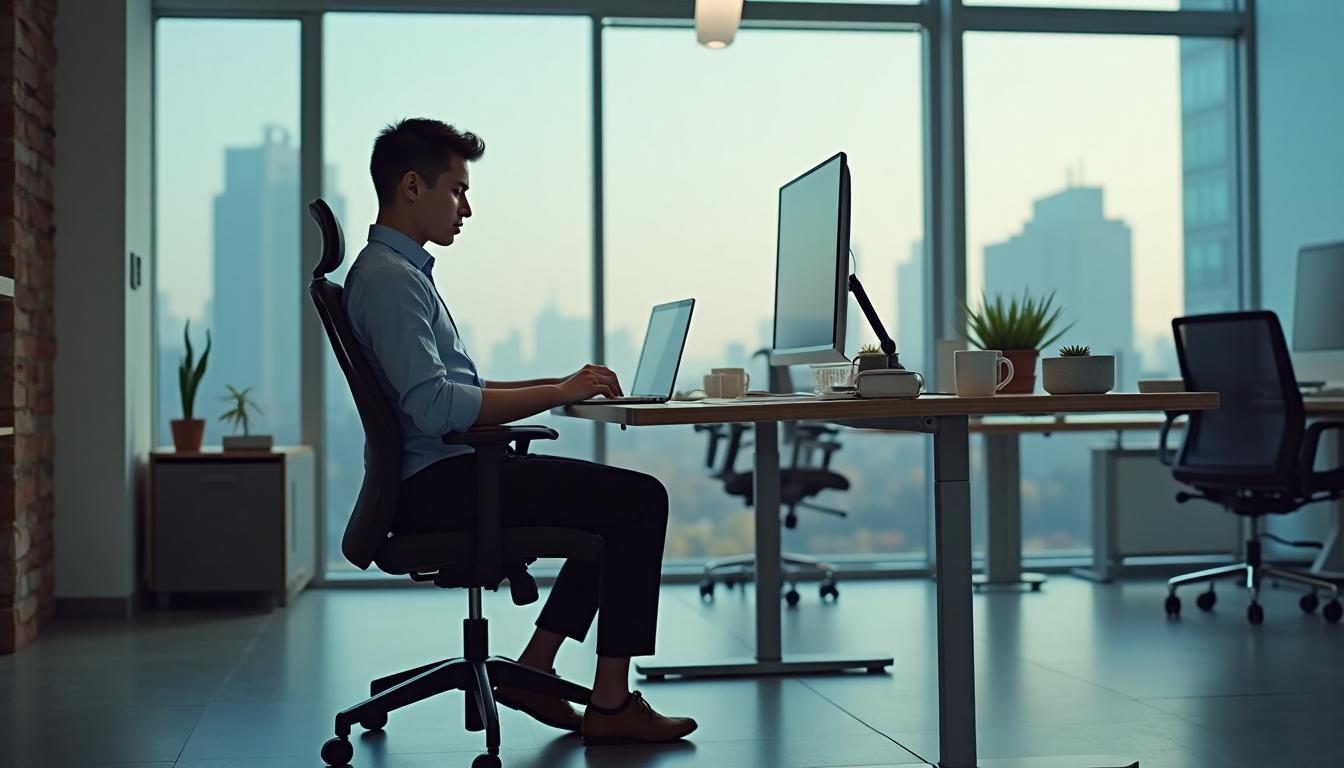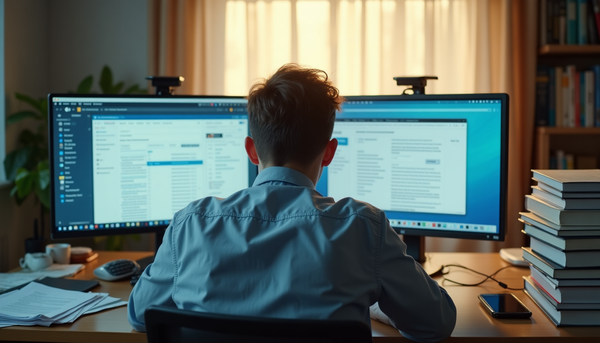The Sitting Epidemic is Real, But You're Solving It Wrong

The Sitting Epidemic is Real, But You're Solving It Wrong
Let me guess—you've probably read about how sitting is "the new smoking" and immediately felt that familiar pang of guilt as you shifted uncomfortably in your chair. Maybe you even bought a standing desk, used it for three weeks, then went back to sitting because your legs hurt and you couldn't concentrate.
Here's the thing: the sitting epidemic is absolutely real, but most people (and most advice) are missing the point entirely.
The Problem Isn't Just Your Chair
Yes, research shows that every additional hour of sitting increases your mortality risk by 5%—even if you exercise regularly. Yes, prolonged sitting screws with your insulin sensitivity, cranks up inflammation, and turns your leg arteries into sluggish rivers instead of rushing streams. The science is solid.
But here's what drives me crazy about most "solutions": they treat sitting like it's inherently evil, as if our bodies are allergic to bending at the hips. That's like saying breathing is bad for you because holding your breath will kill you.
The real problem? We've completely lost what I call "movement literacy."
What the Hell is Movement Literacy?
Think about it this way: a literate person doesn't just know how to read—they can switch between different types of reading throughout the day. They might skim emails, deeply focus on a report, casually browse news, or get lost in a novel. Each requires different cognitive skills and attention levels.
Movement literacy works the same way. Your body should be fluent in dozens of positions and movement patterns throughout the day: sitting, standing, squatting, kneeling, lying down, walking, stretching, carrying things. The problem isn't that you sit—it's that sitting is the only position you're fluent in anymore.
Our ancestors (and yes, even ancient Egyptian mummies had atherosclerosis, but stay with me here) naturally cycled through varied positions all day long. They squatted to cook, knelt to work, walked for transportation, and yes, sat to rest. The difference? Position variety was built into survival, not something they had to consciously hack into their day.
The Research Gets Interesting When You Look Closer
Here's where the science gets really fascinating. When researchers dive deep into the sitting studies, they find that the people with the lowest health risks aren't necessarily those who sit the least—they're the ones who change positions most frequently.
Your femoral and popliteal arteries (the major blood highways in your legs) don't care if you sit for work. They care if you stay in ANY position so long that blood flow stagnates. When you bend at the hip and knee for hours, you're essentially putting a kink in a garden hose. But unlike a hose, your arteries were designed to handle bending—just not endless, unchanging bending.
The inflammation and insulin resistance that spike with prolonged sitting? They're not punishment for using a chair. They're your body's way of saying "Hey, remember me down here? I exist below your eyeballs and typing fingers."
Your Standing Desk Isn't Saving You
Before you feel smug about your standing desk setup, let me burst that bubble too. Standing in one position for hours is just sitting vertically. You're still locked into a single posture, still staring at a screen with your shoulders rounded forward, still disconnected from the majority of your body.
I've seen people develop varicose veins and lower back pain from their standing desk setups because they thought "standing = good" and completely missed the point about movement variety.
Building Real Movement Literacy: A Framework That Actually Works
Forget the movement pyramid. Instead, think about becoming a movement opportunist. Your goal isn't to exercise more (though that's great too)—it's to rediscover the dozens of ways your body can exist in space.
Start With Position Cycling
Every 30-45 minutes, change something. Not just standing up, but genuinely changing your relationship to gravity:
- Sit in your chair normally
- Sit sideways with legs over the armrest
- Stand and shift weight between feet
- Put one foot up on something
- Sit on the floor with legs straight
- Squat down (yeah, I know, but try it)
- Lean against a wall
The key is variety, not virtue. You're not trying to be "good"—you're trying to speak your body's language fluently again.
Become a Micro-Movement Ninja
While you're in any position, add micro-movements:
- Ankle circles while sitting
- Shoulder blade squeezes while standing
- Shifting weight while on phone calls
- Calf raises while reading emails
- Gentle torso twists while thinking
These aren't exercises—they're conversations with your body that keep the lines of communication open.
Hijack Existing Habits
Instead of adding new movement tasks to your already overwhelming day, hijack stuff you're already doing:
- Take phone calls while walking (revolutionary, I know)
- Do calf raises while waiting for coffee to brew
- Sit on the floor while watching Netflix
- Stand during virtual meetings when you're not presenting
- Walk to a colleague's desk instead of sending that Slack message
The Mindset Shift That Changes Everything
Here's the real kicker: stop thinking about movement as something separate from productivity. Start thinking about it as a productivity tool.
When you move regularly, you're not just preventing disease—you're increasing blood flow to your brain, improving focus, reducing decision fatigue, and boosting creativity. Companies with active employees report higher productivity, not despite the movement breaks, but because of them.
That guilt you feel about leaving work 30 minutes early to walk home? That's productivity culture brainwashing. Those 30 minutes of movement might save you an hour of foggy-brained, inefficient work the next day.
Your Action Plan (Because You Asked For It)
Week 1: Awareness
- Set a timer for every 30 minutes. When it goes off, notice what position you're in and how your body feels. That's it. No judgment, no action required yet.
Week 2: Position Cycling
- Same timer, but now change positions when it goes off. Aim for 3-4 different positions throughout your day.
Week 3: Micro-Movements
- Add gentle movement while staying in your current position. Ankle circles, shoulder rolls, gentle twists.
Week 4: Movement Hijacking
- Pick three existing daily habits and add movement to them.
The Uncomfortable Truth
Here's what nobody wants to tell you: there's no perfect position, no ideal desk setup, no magic bullet that will undo years of movement illiteracy overnight. Your body is incredibly adaptable, but it's also honest. If you've spent years training it to only function while sitting and staring at screens, it's going to take time to remember its full vocabulary.
The good news? Your body is also incredibly forgiving. Start having movement conversations again, and it will respond faster than you expect.
Stop Making This Harder Than It Is
You don't need a gym membership, a standing desk, or a complete life overhaul. You need to remember that you have a body below your eyeballs and that it's designed to move in countless ways throughout the day.
The sitting epidemic isn't really about chairs. It's about forgetting that we're physical beings, not brains on sticks. The solution isn't to demonize sitting—it's to rediscover movement literacy and make friends with your full body again.
So here's my challenge: tomorrow, set a timer for every 30 minutes. When it goes off, have a two-minute conversation with your body. Change positions. Move something. Breathe deeper. Notice what feels good.
Your arteries, your insulin sensitivity, and your productivity will thank you.
And maybe, just maybe, you'll remember how good it feels to be fully alive in your body again.
What's your biggest movement challenge right now? Drop a comment and let's figure this out together.




